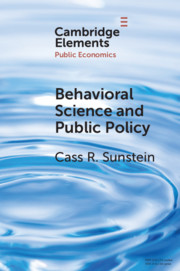Element contents
Behavioral Science and Public Policy
Published online by Cambridge University Press: 26 October 2020
Summary
- Type
- Element
- Information
- Series: Elements in Public EconomicsOnline ISBN: 9781108973144Publisher: Cambridge University PressPrint publication: 12 November 2020
References
- 34
- Cited by



